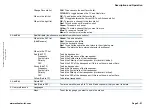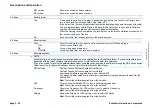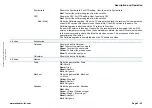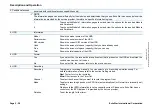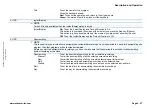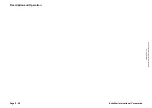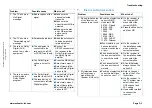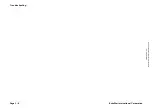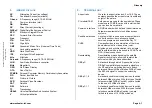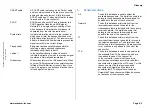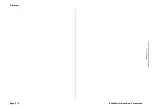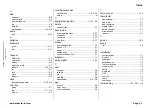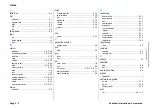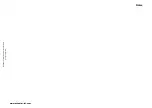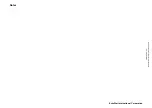
www.echostar-int.com
Page 4 - 1
©
20
04
Ech
o
S
tar
In
te
rn
ati
o
nal
C
o
rp
or
at
io
n
Al
l ri
g
h
ts
r
e
s
e
rv
e
d
GLOSSARY
1.
A
BBREVIATIONS
AC
Alternating Current (ac voltage)
CA
Conditional Access (smartcard)
C-band
A Frequency range (3.70-4.20 GHz)
CI
Common Interface (slot)
DB
DataBase
DC
Direct Current (dc voltage)
DiSEqC
Digital Satellite Equipment Control
EPG
Electronic Program Guide
FEC
Forward Error Correction
Freq
Frequency
FTA
Free-To-Air
GB
Giga Byte
GMT
Greenwich Mean Time (Universal Time Code)
H
Horizontal polarization
HDD
Hard Disk Drive
IDE
Intelligent Drive Equipment
kHz
KiloHertz
Ku-band
A Frequency range (10.70-18.00 GHz)
LNB
Low Noise Block down converter
MHz
MegaHertz
OSD
On-Screen Display
OTA
Over-The-Air
PCMCIA
Personal Computer Memory Card Industry Association
PID
Packet Identification
PIP
Picture-In-Picture
PVR
Personal Video Recorder
SAT
Satellite
S/W
Software
TP
Transponder
USALS
Universal Satellites And Location System
V
Vertical polarization
2.
T
ERMINOLOGY
Aspect ratio
We refer to aspect ratios as 4:3 or 16:9. These
numbers describe the screen format in width and
height of the picture
CI-module/CAM
Both names are used for these modules. These
modules are PCMCIA cards with a slot in which
you can insert a smartcard.
Common Interface
A DVB standard which defines the software and
hardware requirements for condition access
systems.
Conditional access
A system which is used by service providers to
control the subscriber’s access to certain
services, programs and events like Pay TV.
CVBS
Composite video is a combination of the three
basic elements of a video picture (color,
brightness, and synchronization) into a single
cable with two wires in it as used in SCART and
RCA (Video) connections.
Descrambling
Descrambling means decoding the satellite
signal or recording to allow you to watch the
service to which you have subscribed.
DiSEqC
A standard through which it is possible to let a
DiSEqC compatible receiver send a signal over
the RF cable to a switching device to switch
between different LNBs or dishes. DiSEqC uses
the 0/22kHz signal to control the switching
device.
DiSEqC 1.0
A standard used for switching devices to switch
between LNBs or dishes. With this type of switch
(also committed DiSEqC switch) you are limited
to the use of 4 LNBs or dishes.
DiSEqC 1.1
A standard used for switching devices to switch
between LNBs or dishes. With this type of switch
(also uncommitted DiSEqC switch) you are
limited to the use of 16 LNBs or dishes.

